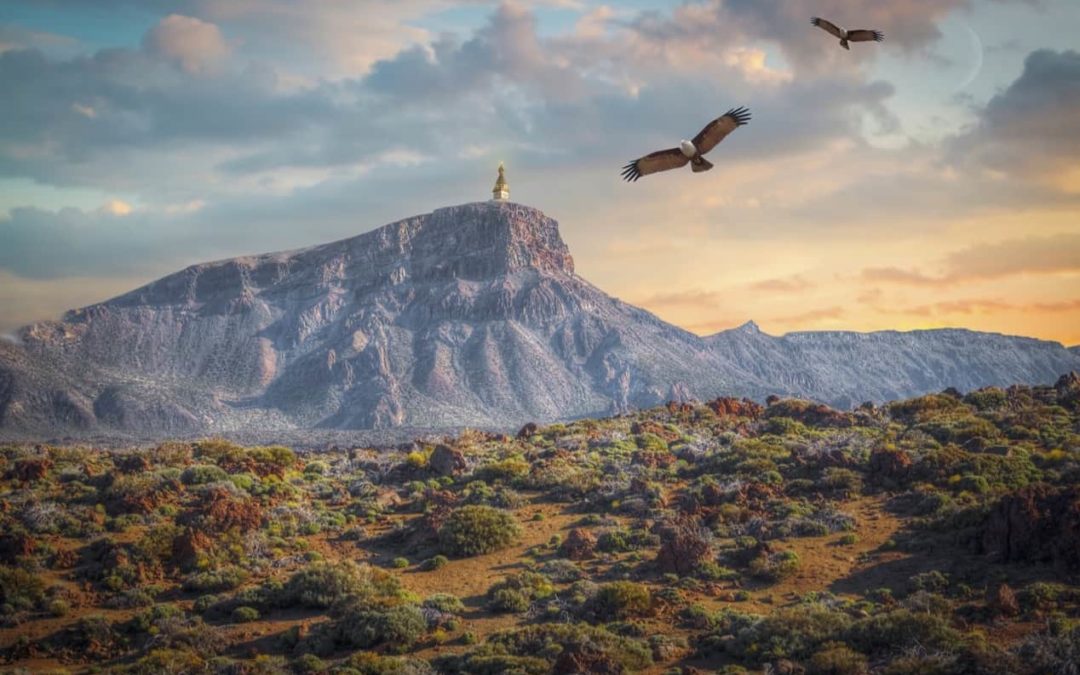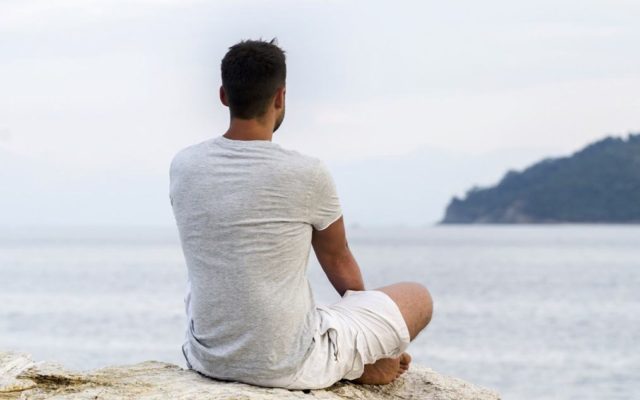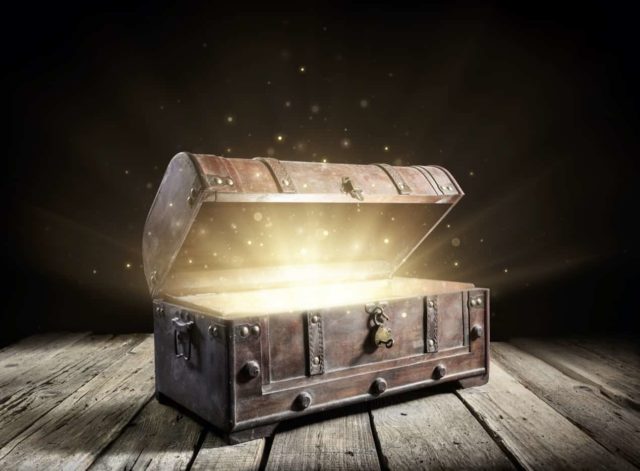Finding the Gold in the Liminal: Conscious Evolution in Times of Transition
We are betwixt and between the familiar and the completely unknown. There alone is our old world left behind, while we are not yet sure of the new existence. That’s a good space where genuine newness can begin. Get there often and stay as long as you can by whatever means possible…this is the sacred space where the old world is able to fall apart, and a bigger world is revealed. If we don’t encounter liminal space in our lives, we start idealizing normalcy.
~ Richard Rohr
Stages of the Rite of Passage
In modern culture, the topic of transition is often regarded as taboo – something aversive and with an element of mystery. Notice what you feel in your body when you contemplate “transition”. Perhaps you notice a moment of pause, and maybe a sense of bracing that shows up as abated breath or rigidity in the shoulders. Maybe a strange sensation of knottiness in the stomach or slight nausea. A feeling like something is about to happen, but you don’t know what it is. And that can be unsettling.
We regularly encounter doorways and thresholds of all kinds – developmental stages, career changes, relationships, the infamous midlife crisis. Indeed, we face many transitions in our lives. Yet rituals and rites of passage are seldom offered to hold space and lend support in such precious and uncertain moments. At the same time, adventure beckons. Ripe with opportunity, transitions surmount to great discovery. The journey, when undertaken with the support of a lantern, a Sherpa, an eager heart and a curious mind, can yield marvelous treasures.
In 1906, anthropologist Arnold van Gennep wrote about his multi-cultural observation of tribal rituals, which he calls rites de passage. He noted three distinct elements experienced in stages: separation, liminality and integration. Among tribal peoples, intentional rituals are traditionally performed at major life intersections such as adolescence, birth, marriage and death. Sacred ceremony is woven into the fabric of indigenous cultures as a way to honor transitions. For example, you may be familiar with the “vision quest”, a ceremonial practice of the Native Americans where a young person ventures alone into the forest to uncover their life purpose.
Imagine yourself as such an initiate. The first stage of your journey begins as you are removed from your known world. You venture into the unknown, where you are to spend time alone in the mystical environment that intrinsically includes an element of perceived danger. This step of separation allows you to enter freely into the middle stage of liminality.
The liminal stage, which is the longest-lasting, is the space between the known past and the unknown future. You pass the threshold of initiation in order to usher in a new reality. It is the in-between, the realm of the undiscovered frontier where you must successfully navigate in order to emerge at the third and final stage of integration. A metaphorical death must take place here – a necessary step toward the future that calls. The discoveries made in the liminal space will be brought back and assimilated into your new life.
Integration is the final stage. A process by which you will bridge the gap between past and future and be reintroduced into society. Having emerged from the liminal with newfound insight and, in many aspects, a new identity, you will take your place among the people. Of note is that you will return transformed and be faced with the task of applying your new course in life.
Breakdown as Breakthrough
Be patient with all that is unresolved in your heart and try to love the questions themselves as if they were locked rooms or books written in a very foreign language. Don’t search for the answers, which could not be given to you now, because you would not be able to live them. And the point is, to live everything. Live the questions now. Perhaps then, someday far in the future, you will gradually, without even noticing it, live your way into the answer. ~Rainer Maria Rilke
When undertaken with conscious and sacred intention, the process of transformation can yield a profound and fruitful hero’s (or heroine’s) journey. However, modern culture lacks proper rituals to honor these inevitable and invaluable ruptures. What we often encounter is an abrupt plunge into momentous transitions, suddenly and without ceremony. We feel disoriented as we descend into unfamiliar terrain, often unequipped with the tools and resources required to be fully present with all that we confront in the obscurity of the liminal.
At the time of this writing there is a global pandemic, financial crisis, polarizing political agendas, violence on the streets and major destructive natural disasters displacing hundreds of thousands of people. The stay-at-home orders, loss of jobs and homes, and consequent disruption of personal identity came on suddenly. For the first time in history, we as a human race find ourselves uniquely connected in an unprecedented global shift that many describe as chaos. A longing for “back to normal” echoes amid voices advocating for change, and one by one people are starting to realize that there is no going back. For some, this is exhilarating and full of possibility. For others, it is paralyzing terror.
We have essentially been plucked from our comforts and flung into the land of the bizarre. Resources are scarce. Above all else we crave a shared experience, mirroring and guidance, yet we are reminded repeatedly of the loneliness, the depth of pain and lack of control of this foreign landscape. Few of us may understand the necessity of the defining chaos of this time. Only one who has the life experience of having traversed the bardo of great transition can know the gifts that await on the other side.
If we are suspended long enough to be opened to higher (inner) wisdom and supported as we move through our liminal space individually and collectively, we can come back renewed and filled with rewards from our journeys. When acknowledged, supported and engaged through our life-changing process, we are able to reap the benefits of the transition and emerge, as butterflies from cocoons, with fresh wings and a renewed sense of purpose. In writing this chapter, my intention is to hold that space and create an opportunity for readers to discover that sacred space within themselves
“To transform breakdowns into breakthroughs is the whole function of a master.”
~ Rajneesh
Moving Through Transitions with the Adolescent
It is the twilight zone between past and future that is the precarious world of transformation within the chrysalis. Part of us is looking back, yearning for the magic we have lost; part is glad to say good-bye to our chaotic past; part looks ahead with whatever courage we can muster; part is excited by the changing potential; part sits stone-still not daring to look either way.
~ Marion Woodman
It all starts with accessing the adolescent archetype. A term coined by the famed depth psychologist Carl Gustav Jung, archetypes are symbolic, primordial images inherent in our existence. Arche means “first”, and type means “model”. Basically, an archetype is the first of its kind – a concept, a behavior, an idea, etc. They are universal patterns, infinite and timeless images that express through and as us on their mission to facilitate the unfolding of life in our unique expression as individual beings.
The archetype of the adolescent is perhaps the clearest representation of the liminal space. Adolescent archetype transitions from the old to the new, navigates change, separates from authority and explores identity in relationships as it transitions from the innocence of childhood into the complexity of adulthood.
As a snake shedding its skin, the conversion is slow and painful. At least several years are spent in this transformational space marked by separation, conflict and an eventual return. It is also characterized by incredible vulnerability. By going through this discomfort, the adolescent helps us discover aspects of our identities that previously lay hidden. We uncover strengths, find courage, and eventually discover compassion.
This slow, painful death of who we once were requires patience, tenacity, and time alone. As Ram Dass sang, “death is a ceremony, in which one takes off one pair of clothes and adopts a new one”. And it rightfully deserves the recognition as such through ritual. Rituals not only mark time, they create time. They allow us to define our values, live in the present moment, and feel a sense of sacredness around what can otherwise be undefined or mundane. And this has important implications not only for mental health, but also for a sense of fulfillment and purpose in life.
This time also requires the support and wisdom of elders who have been through it and can serve as an anchor for a safe return. Whether in the form of a real person, a superhero, an imagined mentor or faith in a spiritual higher power, the presence of a guide is often the difference between a tumultuous free fall and a conscious and harmonized metamorphosis. What we discover, is that within each of us is a most knowledgeable, attuned and trusted guide. If only we can be still and silent enough to listen to his/her voice. Until then, opening to the guidance of others can prove an instrumental asset.
“Inner guidance is heard like soft music in the night by those who have learned to listen.” ~ Vernon Howard
Wisdom from the Ancients – Chinese Medicine and Transitions
After a time of decay comes the turning point. The powerful light that has been banished returns. There is movement, but it is not being brought about by force. The movement is natural, arising spontaneously. For this reason, the transformation of the old becomes easy. The old is discarded and the new introduced. Both measures accord with time; therefore, no harm results.
~ I Ching (The Book of Changes) Hexagram 24, Fu/Return, Richard Wilhelm translation.
With a 5,000+ year old history, Chinese Medicine has devoted centuries and volumes to the development of incredible healing methods to address just about every ill. From herbal remedies to acupuncture treatments and the healing movements and sounds of Qi Gong, all aspects of this rich and time-tested healing art account for the liminal space. In fact, the cultivation and harnessing of Qi (aka energy, prana or life force) to consciously navigate transition is a practice as ancient as Chinese medicine itself.
At the core of Chinese Medicine is Chinese philosophy, which holds at its foundation the theory of Yin and Yang. Developing out of a keen observation of nature, in its incredible complexity rests an inherent simplicity: the basis of life on earth consists of inseparable and contradictory opposites that balance each other, transform into each other, and mutually depend upon each other. Yin-Yang elements such as male-female, dark-light, up-down and life-death comprise the holistic and harmonious entity that is the universe. Of particular note is that change is inevitable, everything is temporary, and when an extreme is reached (ultimate yin/ultimate yang), it inevitably transforms into its opposite (the night is the darkest before the dawn).
To understand the cyclical nature of life and to live in accordance with the principles of nature is to master the art of being human. According to the Chinese ancients, the human has a unique place in the universe; we are tasked with the enormous responsibility of integrating heaven and earth. The spirit or soul quality of the human being is to be reconciled with the earthly animal side – no small task. As pathways to cultivating and directing energy, Qi Gong and Acupuncture developed, in part, as methods of carrying out that grand undertaking.
First appearing in Chinese medical texts during the Warring States period (475-221 BC) and the Han Dynasty (206 BCE – 220 CE), the Eight Extraordinary Vessels are an energetic system within the body that is particularly equipped to address the matter of transition. Tied to our DNA and genetic heritage, they share points with the 12 primary acupuncture meridians and epitomize the journey of life as we know it – from the formless, timeless state that precedes creation to the division of yin and yang, to birth and the soul’s unfolding life journey and eventually death.
The Yin Wei and the Yang Wei Mai, or the Yin and Yang Linking Vessels, are among the many powerful tools in Chinese Medicine to support transition. The very fact of their existence in Chinese Medicine is a noteworthy claim to the ancients’ grasp of the innate compass within the human being. We each contain within a blueprint for the unfoldment of life. True to their name, the Yin and Yang Linking Vessels connect all of the Qi in the body and play a key role in coursing developmental cycles of growth and maturation. To work with them is to harmonize imbalances in feelings of worry, doubt, depression and anger over issues from the past (Yin Wei) with the anxiety in anticipation of what is to come (Yang Wei).
In this way, they work together to link the past and future of a person’s life, supporting the liminal space where we digest life experience. The treatment is aimed at bringing one into the present. Multifold threads weave through the ongoing narrative of life within time and space, attempting to free one from the confines and stagnation of the past while reconciling the fixation to dwell and fantasize about the future. This is accomplished by using specific acupuncture points to direct the Qi of the body to free what is blocked, support taking on an identity, accept life’s curriculum, own and digest life’s experience, synchronize with one’s environment and return back to the self.
Dao, or “the way” – is the conceptualization of that journey. A philosophical concept with myriad interpretations, Dao can be thought of as they way of the cosmos, which is evident in nature. Daodejing, the famous works of the ancient philosopher, Lao Tzu, declares the cosmic Dao to be the source of the universe. It is said when one lives in accordance with the Dao, harmonizing with the natural rhythms of the cosmos, one may be free from suffering. Along with compassion, non-attachment, simplicity and harmony, a fundamental teaching is to live fully in the present.
“If you realize that you have enough, you are truly rich.” ~ Lao Tzu (33)
The Gift of the Present – Yogic Principles in Practice
Yoga takes you into the present moment, the only place where life exists. ~ Patanjali
Going back even more thousands of years and originating in ancient India, Yoga is a holistic discipline and a complete model for healing. The Sanskrit word “yoga” means to join or unite. Overlapping philosophies with the ancient Chinese, yoga teaches and offers specific tools for navigating transitions. The most important of these, perhaps, is the teaching and practice of being “in the moment”. So, what does that have to do with navigating the liminal space and conscious evolution? In a word – everything.
Mindful awareness and focus on the breath are cornerstone teachings of yogic philosophy. Breathing can only happen in the present – so when your thinking mind is attuned to the rise and fall of the breath, all other mental activity ceases and life takes place in the here and now. The continuous practice of mindful breathing retrains the brain, refocuses the mind and reorients the senses to be fully present. Notice your breath right now.
When you find ourself living fully in each moment, you become a starting point for life to express itself. Rather than re-creating your past, reacting to circumstance, running a script from an old belief system or recycling a mental or emotional pattern – you are able to transcend attachment to limited perceptions of “how things should be”. You may then open and allow life to unfold from a place of receptivity and availability to that which is trying to express through and as you.
When you cultivate the practice of living fully in the present, instead of expending vast amounts of energy worrying and wondering what could be, you open to the vastness of what already is. When you nourish your body with movement and exercise, when you expand and soften the mind in meditation, when you practice loving kindness and being a beneficial presence on the planet – you create space, cultivate tolerance and acceptance, and transmute even negative feelings and limiting beliefs into opportunities for greater awareness and connection with all that is.
In a sense – you become the very condition for all of life to emerge through and as you. This is the process and role of enlightenment. At its most basic, to enlighten means to illuminate, to shine a light on. As such, enlightenment is recognized in the yogic traditions as Moksha, or “liberation”. Defined by the late yogic scholar Georg Feuerstein as “that condition of the body and mind in which it is perfectly synchronized with the transcendental reality”, enlightenment is also known as self-realization.
“Yoga is the journey of the self, through the self, to the self.” ~ Bhagavad Gita
Working the Shadow – A Descent to the Depths, Where the Treasure Lays Buried
Everyone carries a shadow, and the less it is embodied in the individual’s conscious life, the blacker and denser it is. At all counts, it forms an unconscious snag, thwarting our most well-meant intentions. ~ Carl Gustav Jung
The irony is, that when we shine the light of consciousness, we illuminate and come to see all that has been living in the dark. It may not be what we think, or what we want to see. Nonetheless, without facing those hidden parts of ourselves we can never be whole. The ancient Sumarian tale of Inanna beautifully illustrates the journey into the shadow:
Inanna, Queen of the Upper World, has many powers and treasures at her disposal. She has a sister, Ereshkigal, who lives in the Great Unknown. Upon learning of the death of Ereshkigal’s husband, Inanna, outfitted in her finest garments and jewels, sets out to be with her sister. She tells her servants to send help if she has not returned in three days’ time.
As she descends into the Great Unknown to meet her sister of darkness, Inanna is greeted at each of seven gates and is stripped of her crown, her garments and her jewels. At the end of the descent she stands naked in front of her sister and meets her fate. As is customary in the Underworld, she dies and is hung on a hook to rot while demons feast upon her flesh. After 3 days go by without Inanna’s return to the Upper World, her servants arrange to bring back the Queen.
They call upon two tiny creatures, who find their way to Ereshkigal in the underworldly darkness of the Great Unknown. Upon seeing the pain on her contorted face, they offer their compassion by listening to her woes with empathy. Feeling seen and heard, a part of her is healed and so Ereshkigal offers them a gift. They ask for Inanna’s life to be restored, and bring her back.
When Inanna awakens, she knows her life has changed. What used to be OK is no longer OK. The garments and jewels that used to adorn her body now show themselves a façade – they were only there to hide a certain emptiness inside. Having discovered a part of herself that lay previously hidden, she is imbued with depth and seeks new meaning and greater authenticity in her life.
In this story of symbolic personal myth, it is important to remember that all the characters are aspects of the self. You are Inanna – one who courageously sets out on a journey of self-discovery. You are Ereshkigal – the one who hides your pain in the darkness. In doing so, you protect the precious treasures that lie within until you are ready to reclaim the cast-off parts of self and integrate them into your life. The two creatures are the part of you that is capable of great compassion and must take the time to listen to the whisperings of your soul. Listening to yourself is an act of kindness and a service of great wisdom.
All that remains in the shadowy dark, or in the realm of your unconscious, is wanting to emerge. Yet it hides from the light of day under the veils of shame and fear. Anything we hide from ourselves, whether positive or negative, is what makes up the contents of the shadow. At times wielding tremendous power over our lives, what remains stuck in shadow is responsible for self-sabotage and the thwarting of forward movement and personal growth. Yet, when discovered and reclaimed, it becomes a most useful resource. When we dive in and do the work of facing our fears and unmasking our shame, what we unearth becomes our treasure.
When Inanna re-emerged, she was in touch with her wholeness in a way she never was before. She was connected to deeper parts of herself and she discovered that she had the resources to heal her inner wounds. She didn’t have to hide behind her jewels anymore. As sovereign of her land she stood powerful in her true self and governed with love. It all started with an act of courage. Her time in the Great Unknown is an illustration of the liminal space – she was literally suspended, hanging on a hook, while a cast-off part of herself (Ereshkigal) was being healed.
“We carry inside us the wonders we seek outside us”. ~ Rumi
Integrating the Gold – Journey Back to the Self
Your life is a sacred journey. And it is about change, growth, discovery, movement, transformation, continuously expanding your vision of what is possible, stretching your soul, learning to see clearly and deeply, listening to your intuition, taking courageous challenges at every step along the way. You are on the path exactly where you are meant to be right now. And from here, you can only go forward, shaping your life story into a magnificent tale of triumph, of healing, of courage, of beauty, of wisdom, of power, of dignity, and of love. ~ Caroline Adams
Inanna faced her fears and descended into darkness. She hung in the liminal space, healed her wounds and discovered the gift of authenticity. She then re-emerged back to her life to show up for it fully. There is a biological imperative within each of us that calls us forth on a similar journey of self-discovery. We owe it to ourselves to undertake this calling. A life that is lived fully is a life abundant with purpose, meaning and satisfaction. At our deepest core, we all yearn to connect with our wholeness. The call often comes in the form of a loss or hardship. It is within the walls of the pain that our treasures are found.
The gifts within are parts of ourselves we buried. Usually this happens because at some point we receive the message that a behavior, reaction or personality trait we possess is unwelcome. The gifts are parts of us we haven’t yet discovered, perhaps because they hadn’t ripened until the circumstances and timing was right. The gifts are anything and everything within us, that we often recognize outside of us, but do not (yet) identify as an aspect of our eternal wholeness. And the trouble with keeping it outside, is that we will always search for a sense of fulfillment from the external world. And that can often be a disappointing and fruitless search. Instead, we can realize that we already have everything we need, right here right now.
When taking a journey into your shadow, you may discover something you judge to be a negative quality – selfishness, jealousy, hatred, fearfulness, etc. When that happens it’s important to remember that we all have those parts in us anyway, and it doesn’t mean that that quality defines you entirely. In fact, no single person is so simple, as to be defined by any one trait. We are vast and complex beings! When you encounter a “negative” aspect of self, have compassion. Understand that it is something you have in common with every human being you come in contact with, and it is only one part of the infinitude of you.
It may surprise you to know, that sometimes what is unveiled is a “positive” trait. Many of us received the message that being too smart, too pretty/handsome, too energetic, too optimistic, too insightful (the list is long, you get the idea) is undesirable. It means others will be jealous, and not accept us! Or it means there will be more expectations and more responsibility for us to bear, which may be scary. One way or another, society find ways to shame our brightest qualities into the domains of our shadows. The process of uncovering and accepting your innate “goodness” can be just as demanding as that of discovering unwanted aspects. And it is also incredibly, unapologetically rewarding.
We can say that this is the journey that we are always on, as individuals and collectively. If we really think about it – we are in transition all the time. Each moment our bodies and minds respond to input from the environment. Each moment is an opportunity for us to discover, practice and embody more of our whole and true selves. I invite and encourage you to embrace your journey fully. You have your whole life to gain!
- To support your body temple: eliminate toxins, minimize stressors, optimize your sleep hygiene, exercise the right way and amount for your unique body type, refine your diet and nutrition, promote circulation and enhance your detoxification pathways.
- To nurture your mind: practice daily meditation, develop a morning and evening routine, maintain an evening gratitude journal and a morning dream journal.
- To nourish your soul: spend time in nature, walk barefoot on the earth, cultivate a practice of awareness of your oneness with all that is, embrace and embody your creativity and let yourself listen to your inner wisdom.
Know that any feeling of restlessness, anything you would consider to be irritable discontent is a calling from your higher self to journey inward. That is where you will find your truth. Seeking this truth is the key ingredient to conscious evolution in times of transition.
“Your vision will become clear only when you look into your heart. Who looks outside, dreams. Who looks inside, awakens.” ~ Carl Jung
Acupuncture, Yoga Therapy, Functional Medicine and Holistic Counseling are powerful resources of support in times of transition . CONTACT US to learn more, or BOOK HERE.
Click here to learn how to use incense and how to burn incense sticks.
References
Feuerstein, G. The Shambhala Encyclopedia of Yoga. Boston: Shambhala, 1997.
Jung, Carl Gustav. The Archetypes and the Collective Unconscious. Princeton University Press. 1980.
LaFargue, Michael. The Tao of the Tao Te Ching – A Translation and Commentary. State University of New York Press, Albany. 1992.
Ram Dass – https://www.lionsroar.com
Sri Swami Satchidananda. The Yoga Sutras of Patanjali. Integral Yoga Publications. 2009.
Tosi, Charlene Bell. Discover Your Woman Within – A Journey to Wholeness. Tosi and Associates, Inc. 2012. P67-86
Van Gennep, Arnold. The Rites of Passage. University of Chicago Press, 1960.
Wang Bing. Yellow Emperor’s Canon of Internal Medicine. Translated by Wu Liansheng, Wu Qi. China Science and Technology Press, Beijing. 1997.
Wilhelm, Richard, and Cary F. Baynes. The I Ching: Or, Book of Changes. New York, Pantheon Books. 1950.







